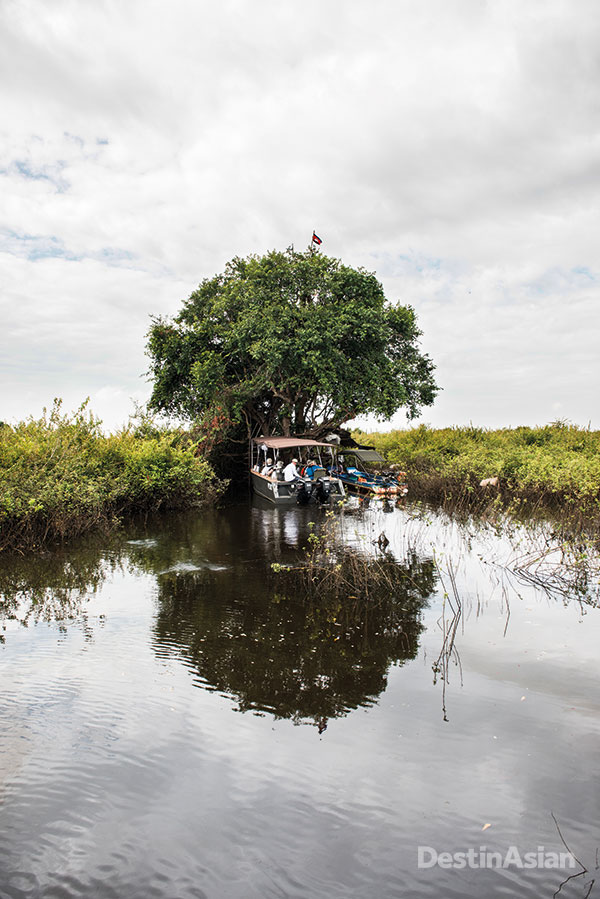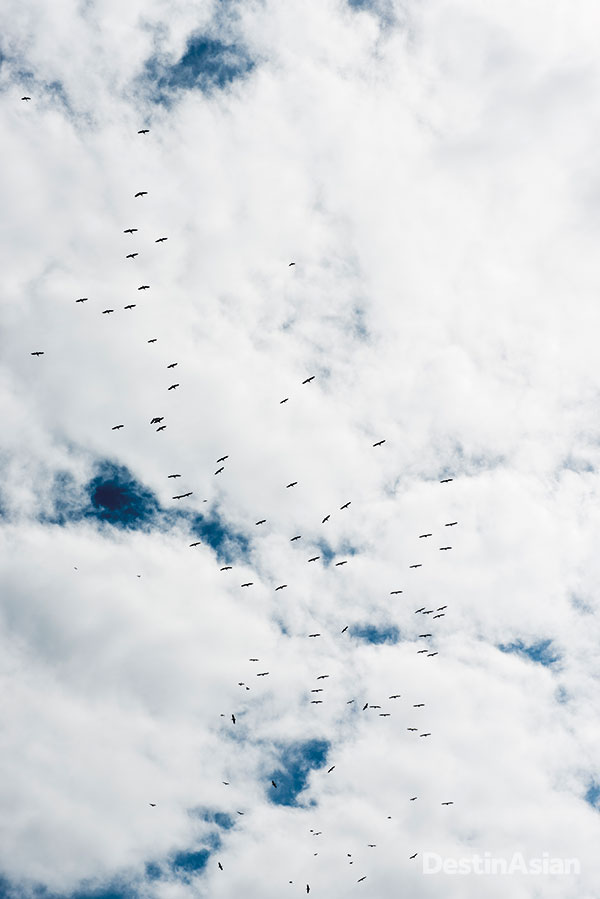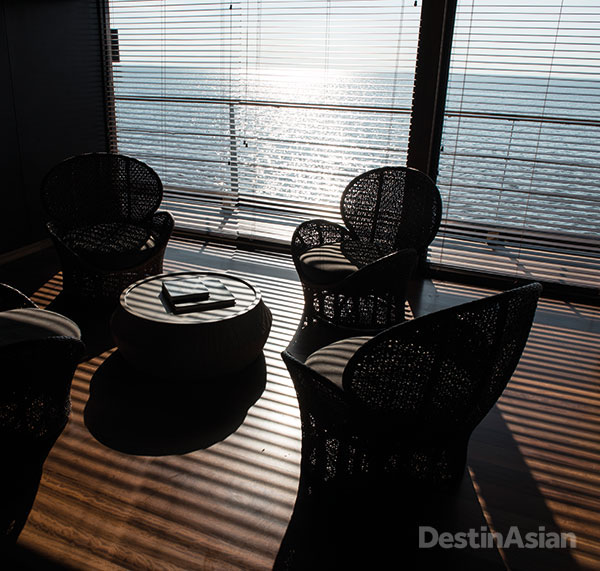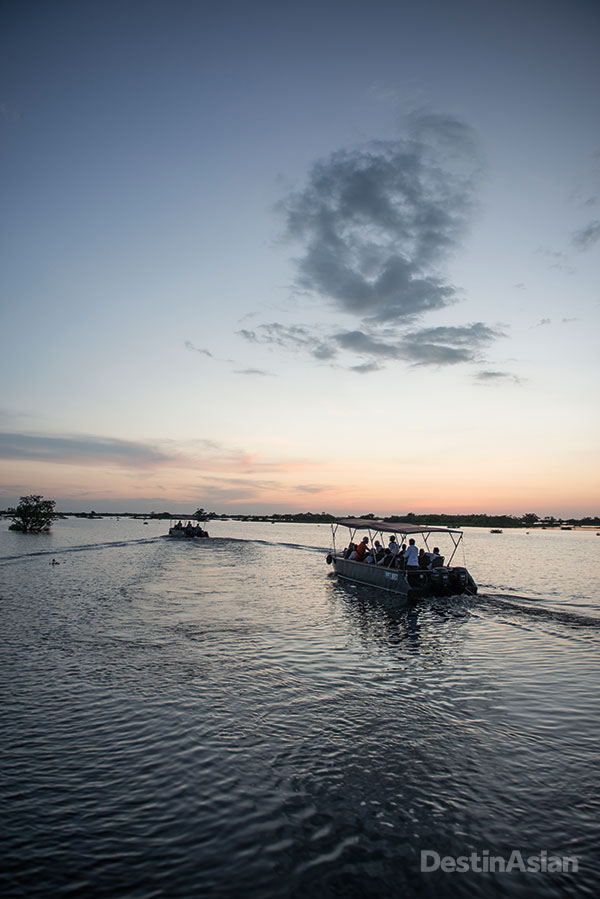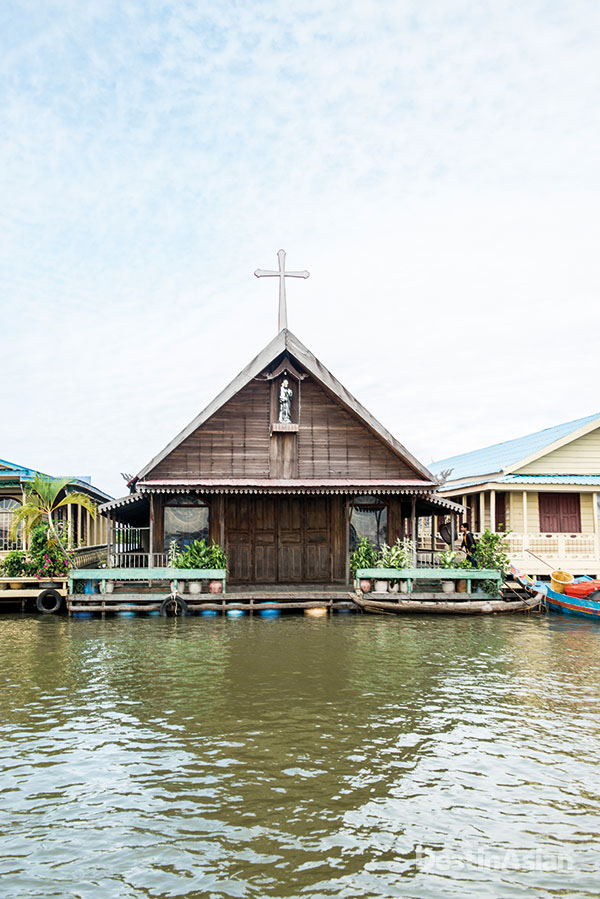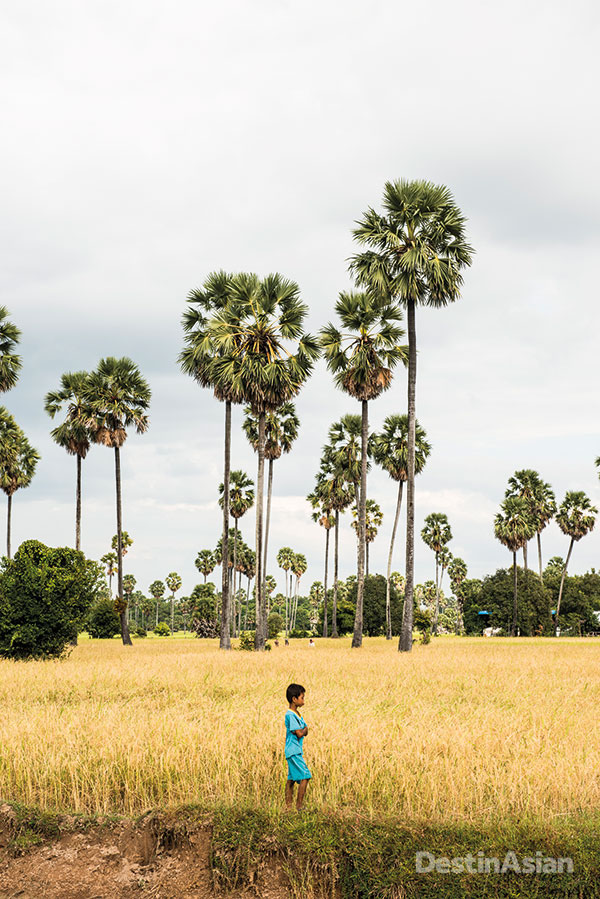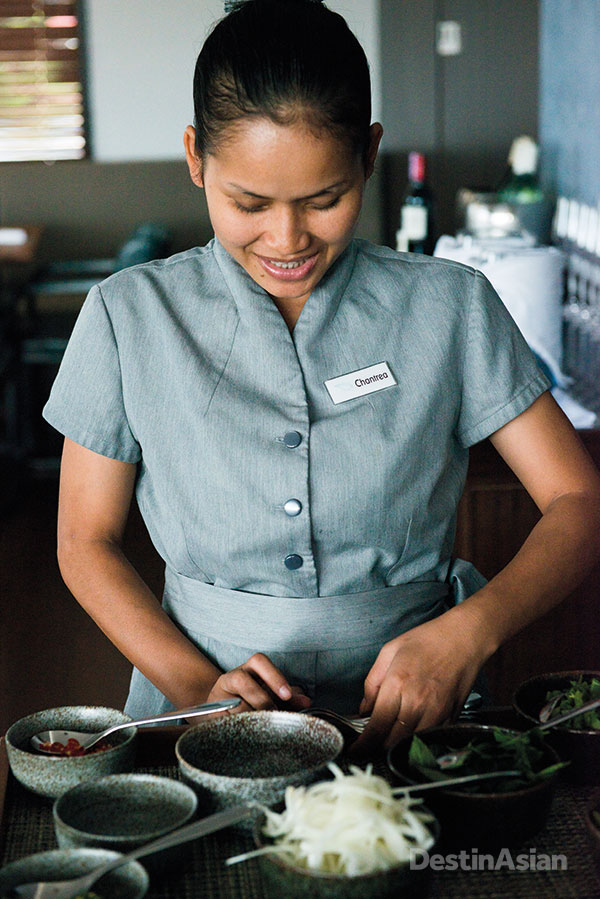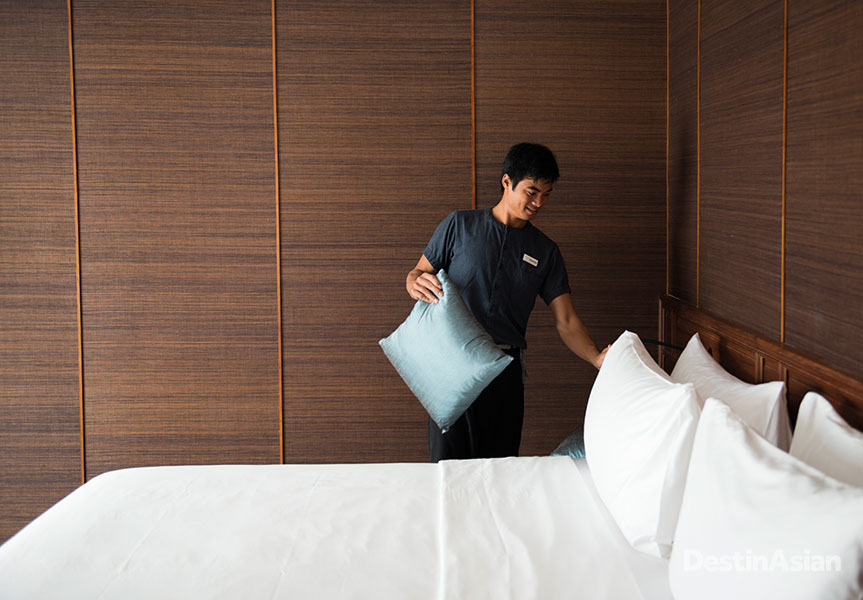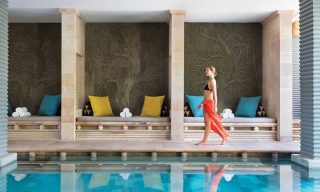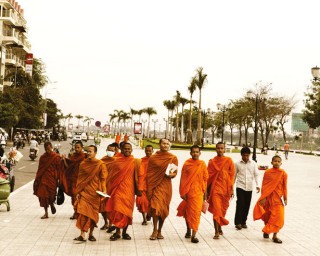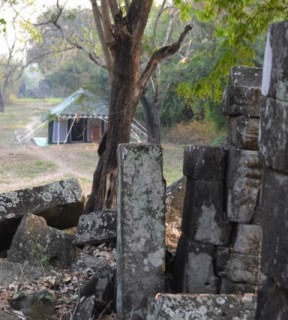A languid cruise from Siem Reap to Phnom Penh reveals the natural and cultural riches of this corner of Cambodia, as well as the pleasures of a well-appointed boat.
By Christopher P. Hill
Photographs By Jason Michael Lang
We make our incursion into the flooded forests of the Tonle Sap under a low, cirrus-streaked sky. At least, it feels like an incursion—threading its way through mangrove-choked channels, our aluminum skiff, equipped with muffled outboard motors and painted a green-tinged gray that mirrors the color of the lake water in the filtered morning light, has a stealthy, almost military aspect to it. The mood on board is vaguely surreptitious, too, as we scan the waterlogged wilderness for our quarry. Then comes a rapid-fire set of directions from our team leader, Visoth, that seem better suited to a commando raid: “Ten o’clock, ten o’clock in the bush!” and, “On your 12! On your 12!”
On our 12, about 20 meters up the channel, is a Chinese pond heron, its light brown plumage almost invisible against a thicket of giant mimosa. Startled by our appearance, the bird takes flight, revealing a flash of snow-white wings as it skims away across the water. “Very nice,” says Visoth, adjusting the knot in his checkered krama scarf. “Are you ready for more now?”
It’s the start of the dry season here in Cambodia—Visoth tells us the monsoon shifted just three days earlier—and the Prek Toal Bird Sanctuary is already teeming with life. As the morning progresses, we spot more pond herons and one of their larger cousins, a purple heron. There are Oriental darters drying their wings in the sun and young cormorants flapping low over the treetops (Visoth, ever ready with a bon mot, says they hatched a month ago and that “they are now professional fliers”). A fish eagle perches on a distant branch; a little red-headed woodpecker flashes past. “We hardly see them!” Visoth beams. What we don’t see are any other people, save for a lone fisherman gathering water hyacinth and a young European couple out on an excursion from Chong Khneas, the nearest dock, 75 minutes by speedboat to the northeast. Prek Toal may be a mecca for birders, but getting here requires serious commitment.
Unless you happen to be a passenger on the Aqua Mekong, that is. The newest riverboat to cruise the waters between Siem Reap and Vietnam’s Ho Chi Minh City—it was launched last October—the Aqua Mekong is also the sleekest. Sixty-two meters from stem to stern, it has an undeniably modern profile, with huge plate-glass windows punctuating its sides and a jaunty, tentlike awning shading its pool deck. It’s the third vessel in a small fleet founded by Francesco Galli Zugaro, a handsome Swiss-born Italian-American who launched his first boat, the Aqua Amazon, on the Peruvian Amazon in 2008. Now based in Singapore, Galli Zugaro, who just happens to be along for this cruise, says the Aqua Mekong isan evolution of his original concept—larger than its sister ships but still intimate, with a high crew-to-guest ratio (20 hospitality staff, all Cambodians, look after a maximum of 40 passengers) and a spare, contemporary elegance that informs everything from the boat’s lacquer-paneled dining room to its 20 streamlined cabins, which feature floor-to-ceiling windows (some of which slide open onto private balconies), bronze-hued walls covered in woven fiber, and black-tiled bathrooms where you can watch the passing scenery as you shower.
But the Aqua Mekong’s secret weapon is its trio of skiffs, eight-meter-long runabouts that whisk passengers into shallow channels and backwaters that other cruisers can’t reach. They come in particularly handy on the Tonle Sap, Southeast Asia’s largest lake. Barely a meter deep in the dry season, the Tonle Sap more than quadruples in size during the summer monsoon, when the water level of the rain-swollen Mekong rises so precipitously that part of the torrent is pushed upstream along the 100-kilometer-long channel (the Tonle Sap River) that connects it to the lake, reversing the tributary’s flow and flooding the Tonle Sap basin. The annual deluge reaches its peak in September, when the lake’s depth tops 10 meters, inundating thousands of square kilometers of marshland and alluvial forests. But it’s late November now and the waters are already receding, ushering in the start of the nesting season for the migratory birds that congregate in Prek Toal. Without the skiffs, we’d probably be sitting back on the deck of the Aqua wondering what all the fuss was about.
Our course through the mangroves takes us to a ranger station, where we pick up one of its crew to guide us deeper into the 31,282-hectare sanctuary. The station, such as it is, inhabits a partially submerged tree, with a bamboo landing in the fork of its trunk and, six meters above in the branches, another platform equipped with a telescope and a radio. Visoth explains that this is one of more than two dozen such stations scattered around the reserve, used by a roving band of 40 or so rangers to keep an eye out for egg poachers and bird hunters. Many of them are former poachers themselves, making them experts at their job.

